This website uses cookies so that we can provide you with the best user experience possible. Cookie information is stored in your browser and performs functions such as recognising you when you return to our website and helping our team to understand which sections of the website you find most interesting and useful.
Visit to Atsuta Jingu! Guide the must-see SPOT and worship model course
Visit to Atsuta Jingu! Guide the must-see SPOT and worship model course
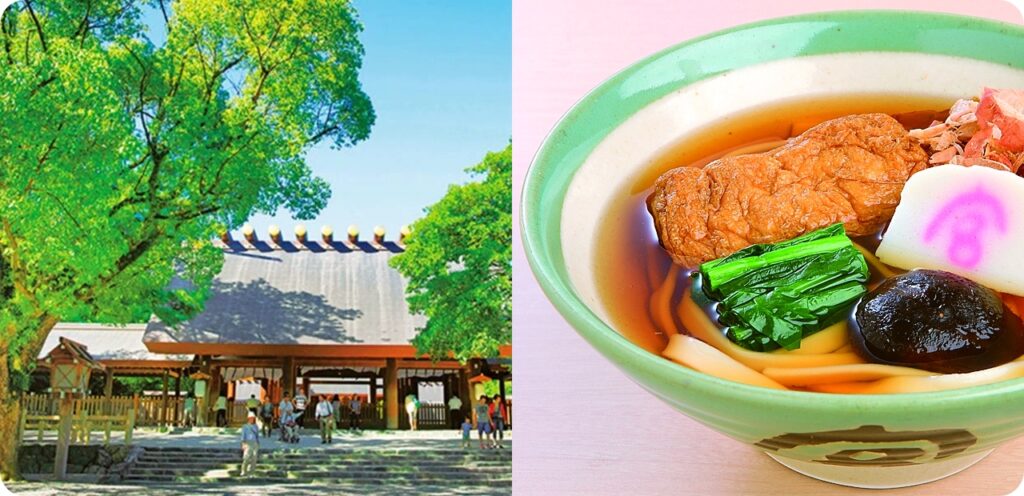
Atsuta Jingu, a sacred shrine dedicated to the god sword. It is said that the warlords of the past, including Oda Nobunaga, have made a must-win prayer. We will guide you through a model course of worship to one of Japan's most prestigious companies.
Total: 1 Day
General Information
[What kind of shrine?] Introduction of Atsuta Jingu
Atsuta Jingu are in front of Meitetsu Jingumae Station and JR Atsuta Station in Nagoya City. It is a shrine that originated about 1900 years ago when it enshrined the Kusanagi no Mitsurugi, one of the three types of sacred treasures. Outside the vast precinct, which covers about 190,000 m², there are a total of 45 companies, including Hongu, Betsugu, Sessha, and Massha.
Highlights
[BEST3] Must see point of Atsuta Shrine!
1. Enshrine the Kusanagi no Mitsurugi
Kusanagi no Mitsurugi is one of the three types of sacred instruments that have been inherited as a token of the Emperor's succession to the throne. It also appears in the "Kojiki" and "Nihon Shoki", and is a Shinken that is said to have been used by Yamato Takeruno Mikoto for national stability. By the way, the mirror of the three kinds of sacred treasures is enshrined in Jingu of Ise, and the Magatama is enshrined in the Imperial Palace.
2. The fence dedicated by Nobunaga is extant
During the Battle of Okehazama, Oda Nobunaga visited the Atsuta Jingu for a must-win prayer, and the fence that he dedicated as a thank you for his victory still stands.
3. A large number of valuable cultural objects
It holds about 6000 items of material contributed by the imperial family, generals and others. What, 178 of them have been designated as national treasures and Aichi Prefectural Cultural Property!
Kusanagi no Mitsurugi is one of the three types of sacred instruments that have been inherited as a token of the Emperor's succession to the throne. It also appears in the "Kojiki" and "Nihon Shoki", and is a Shinken that is said to have been used by Yamato Takeruno Mikoto for national stability. By the way, the mirror of the three kinds of sacred treasures is enshrined in Jingu of Ise, and the Magatama is enshrined in the Imperial Palace.
2. The fence dedicated by Nobunaga is extant
During the Battle of Okehazama, Oda Nobunaga visited the Atsuta Jingu for a must-win prayer, and the fence that he dedicated as a thank you for his victory still stands.
3. A large number of valuable cultural objects
It holds about 6000 items of material contributed by the imperial family, generals and others. What, 178 of them have been designated as national treasures and Aichi Prefectural Cultural Property!
Course
Guide the worship model course
We introduce a model course of about 2 hours to walk around the precincts with historic spots and cultural treasures. There is free guidance from 10 to 15 on Saturdays, Sundays and public holidays, so please take advantage of the volunteer guide.
Culture
START Seimon&Seisando
It is the entrance to the sacred precinct. After passing the Otorii at the southern end, you will continue to the approach to the approach. You can feel the austere atmosphere as you step into the many wooded and green precinct. Take off your hat, bow in one, and then walk through the gate.
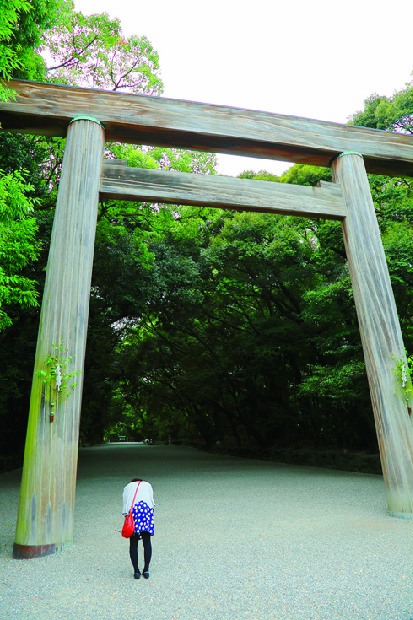
Activities
Temizuya
Before you come to God, let's purify the mind and body with clean water. It is formal practice to first purify the left hand, then rinse the mouth with the water taken in the right hand, and then the left hand again.
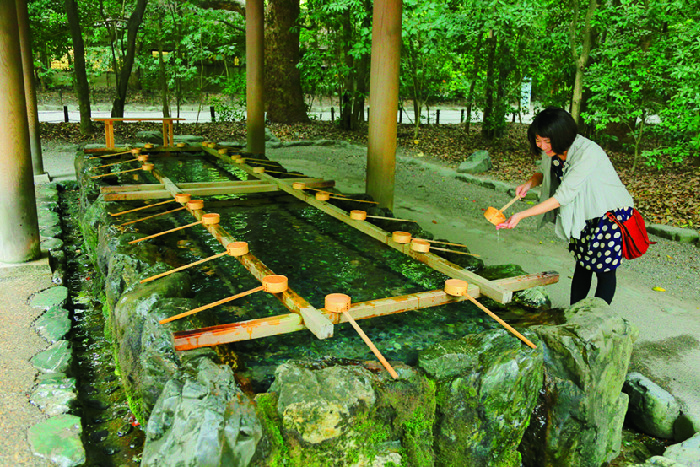
History
Hongu
From the worship of the three sacred treasures, it was converted into a Shinmyo-zukuri similar to that of Jingu of Ise in the year of Meiji 26 (1893), where the priest god, Atsuta no Okami, with Kusanagi no Mitsurugi as the sacred body, visits the sacred shrine, which is wrapped in a dignified atmosphere.
(2nd photo) Also pay attention to Chigi penetrating the sky!
(2nd photo) Also pay attention to Chigi penetrating the sky!
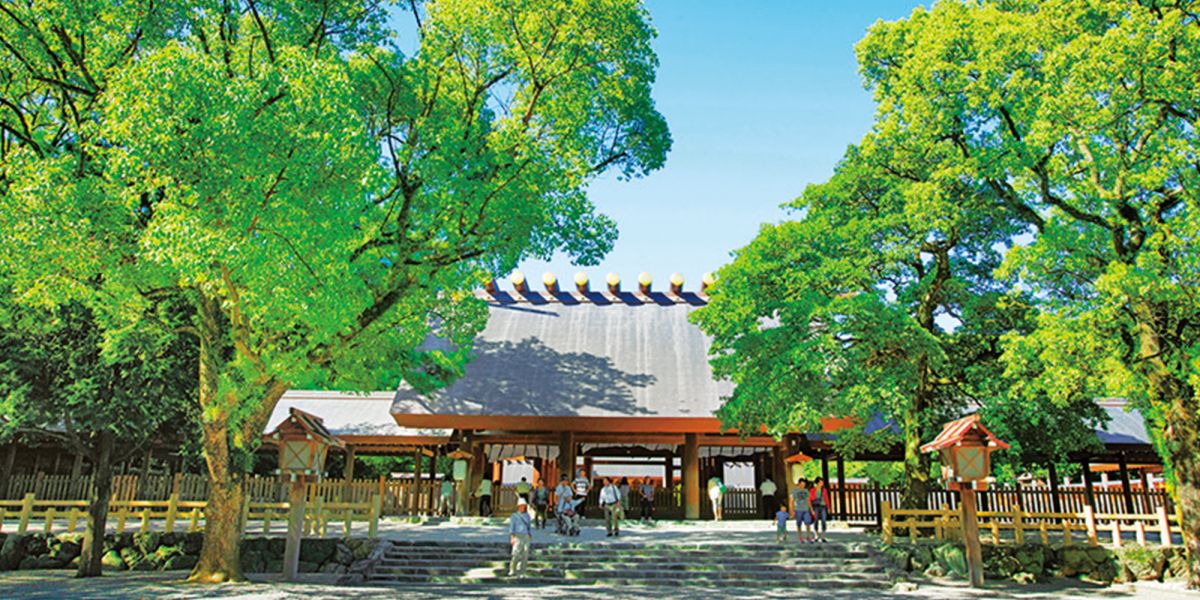
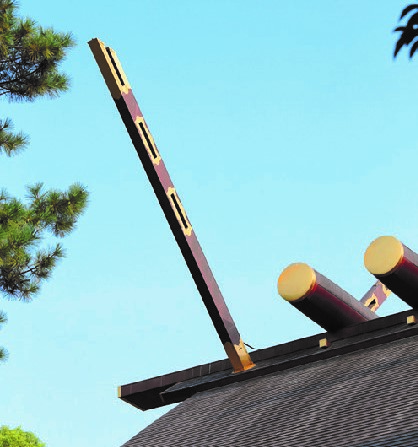
History
Homotsukan
This isHomotsukan that holds treasures that have been dedicated since ancient times. The Kusanagi no Mitsurugi is Goshintai, and it is said to be a treasure house of famous swords with many holdings of sword swords. In addition, the exhibition is held on a monthly basis from about 6000 items of cultural property, such as ancient documents and wagomi. * The contents of the exhibition need to be queried.
Atsuta Jingu Homotsukan
Address: Atsuta Jingu, 1-1-1 Jingu, Atsuta-ku, Nagoya, Aichi Prefecture
TEL:052-671-0852
Opening hours: 9:00 to 16:30 (Last entry is ~ 16:10)
Closed: Last Wednesday of every month and the following day, December 25-31
Price: 500 yen to enter the building (subject to change), separate fee for special exhibitions and special exhibitions
Atsuta Jingu Homotsukan
Address: Atsuta Jingu, 1-1-1 Jingu, Atsuta-ku, Nagoya, Aichi Prefecture
TEL:052-671-0852
Opening hours: 9:00 to 16:30 (Last entry is ~ 16:10)
Closed: Last Wednesday of every month and the following day, December 25-31
Price: 500 yen to enter the building (subject to change), separate fee for special exhibitions and special exhibitions
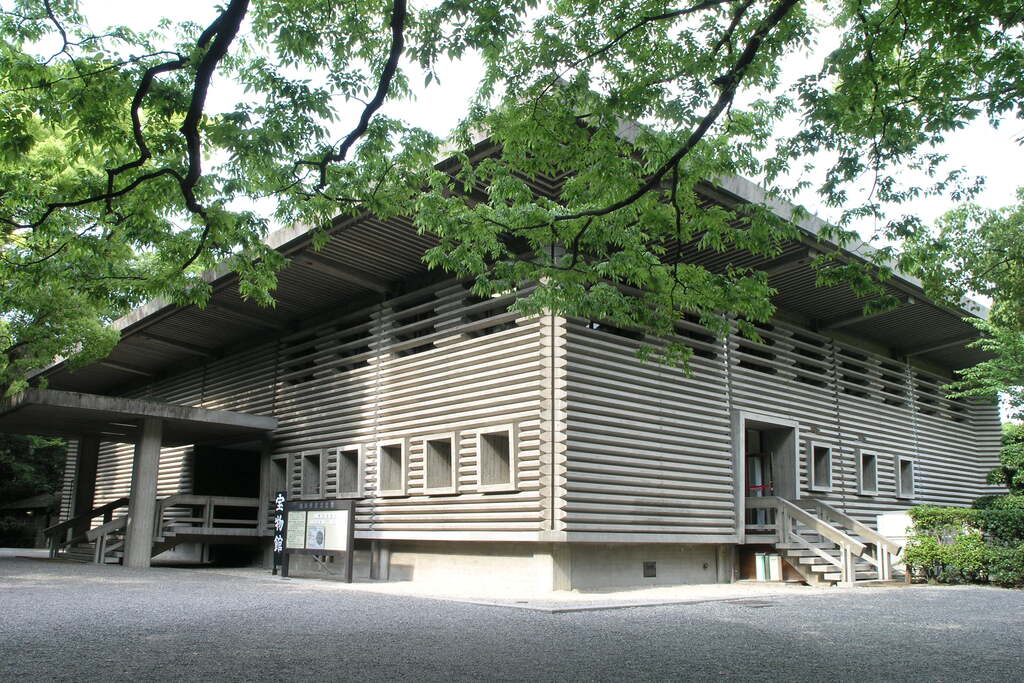
Nature
Okusu
Okusu, a sacred tree that is over 1000 years old. It is a sacred tree about 7m around the trunk and about 20m high, reportedly planted by Kobo Daishi. The stunning branch is full of life force beyond the 1000-year mark, and the mossy thick trunk makes you feel when it is eternal.
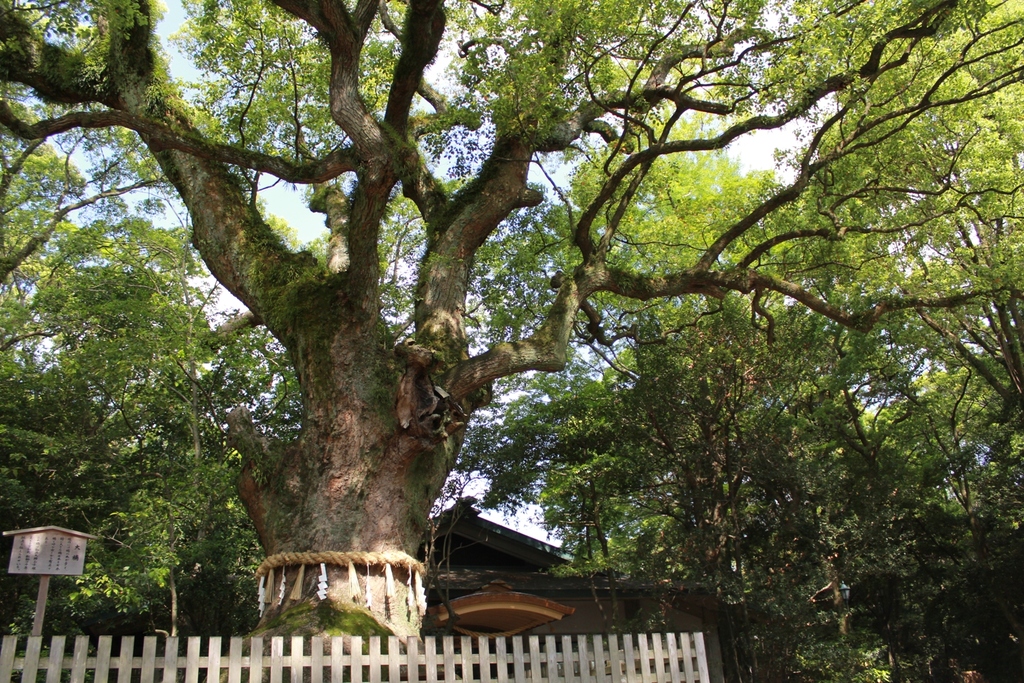
History
Nobunaga Bei
Nobunaga Bei, an earthen wall dedicated by Oda Nobunaga to thank him for his victory in the Battle of Okehazama. You can see part of the south side. It is a heavy construction with a total length of about 200m, and also serves to separate the precinct, which is a sanctuary, from the outside world. It is counted among the three largest earthen walls in Japan, along with Oneri Bei of the Nishinomiya Jinja in Hyōgo, Japan. There is a profit in the must-win prayer!
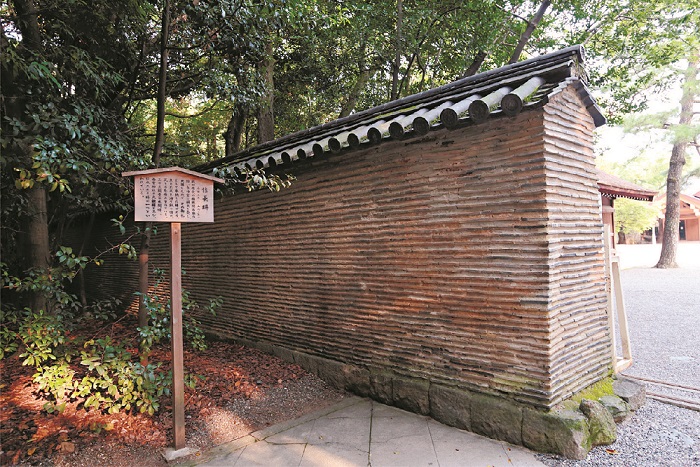
Activities
GOAL Shimizu-sha
Beyond the Kagura-den, Shimizu-sha is settled down. It is known by the nickname of "Oshimizu-sama" and enshrines the god of water, Mizuhanome no kami.
(2nd photo) It is said that a clean spring water will make skin beautiful when it is put on the it. There is also faith that a wish will come true if you apply water three times to the central stone of the spring water behind the company.
Atsuta Jingu
Address: 1-1-1 Jingu, Atsuta-ku, Nagoya, Aichi
Phone number: 052-671-4151
Opening hours: Precinct Freedom
Closed: No Closed
Fee: Precinct Freedom
(2nd photo) It is said that a clean spring water will make skin beautiful when it is put on the it. There is also faith that a wish will come true if you apply water three times to the central stone of the spring water behind the company.
Atsuta Jingu
Address: 1-1-1 Jingu, Atsuta-ku, Nagoya, Aichi
Phone number: 052-671-4151
Opening hours: Precinct Freedom
Closed: No Closed
Fee: Precinct Freedom

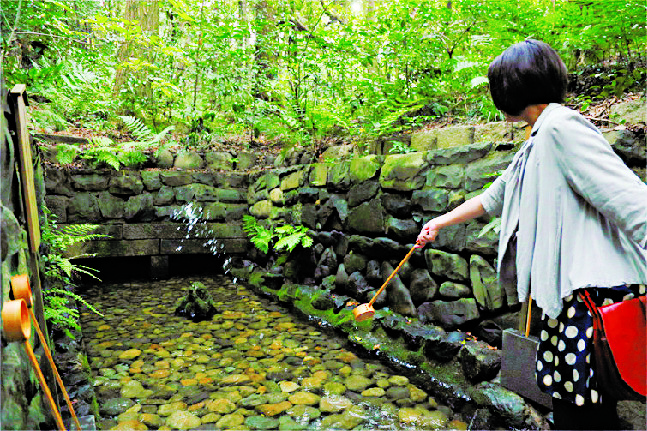
Highlights
[More highlights of the Precinct 1] Introducing the Betaugu, Sessha, and Massha.
History
1. Hakken-gu
It is a must-win prayer! Hakken-gū, which was settled in 708. It is said that faith from the samurai was strong, and that Oda Nobunaga, Toyotomi Hideyoshi, and Tokugawa Ieyasu also visited.
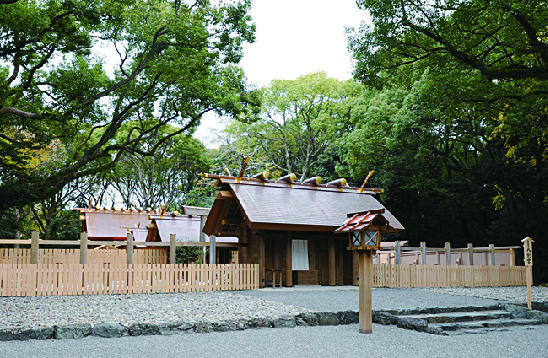
Culture
2. Kusunomimaesha
The benefit is a safe childbirth prayer. Many women worship as god of safe childbirth. It has no shrine and the sacred tree of the camphor tree is enshrined.
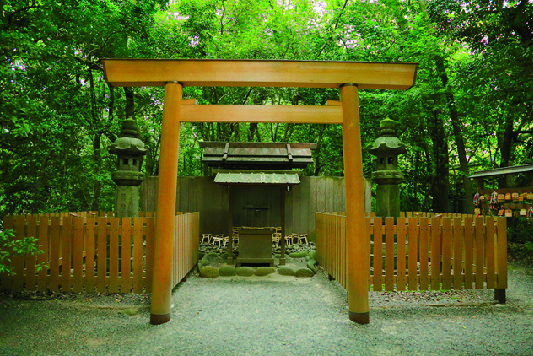
Culture
3. Kamishikama Jinja
The benefit is scholastic fulfillment. Kamichikama Jinja, also known as "Chie no Monju-sama", is dedicated to many prays for passing and vocational fulfillment.
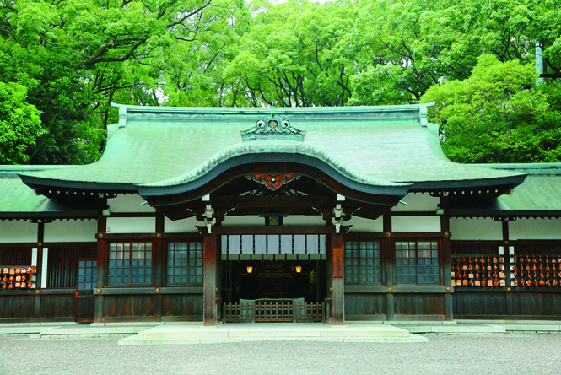
Highlights
[More highlights of the Precinct 2] Tsurugi no Hoko Kusanagi-kan
You can see valuable swords designated as national treasures and important cultural treasures.
Culture
The Tsurugi no Houko Kusanagi-kan, located in the Kusanagi Hiroba of Atsuta Jingu, is a museum that displays valuable swords collected by the Atsuta Jingu, where offerings of swords have been made for a long time. In addition to viewing about 450 swords, there is also an experience area where visitors can feel the weight of Japanese swords.
Tsurugi no Houko Kusanagikan
Phone number: 052-671-0852
Price: 500 yen to enter the building (there is a common ticket with Homotsuko)
Time: 9:00 to 16:30 (the last entrance is 16:00, the last entrance of the common ticket is 15:30)
Closed: 2 days before the last Thursday (subject to change), December 25-31
Tsurugi no Houko Kusanagikan
Phone number: 052-671-0852
Price: 500 yen to enter the building (there is a common ticket with Homotsuko)
Time: 9:00 to 16:30 (the last entrance is 16:00, the last entrance of the common ticket is 15:30)
Closed: 2 days before the last Thursday (subject to change), December 25-31
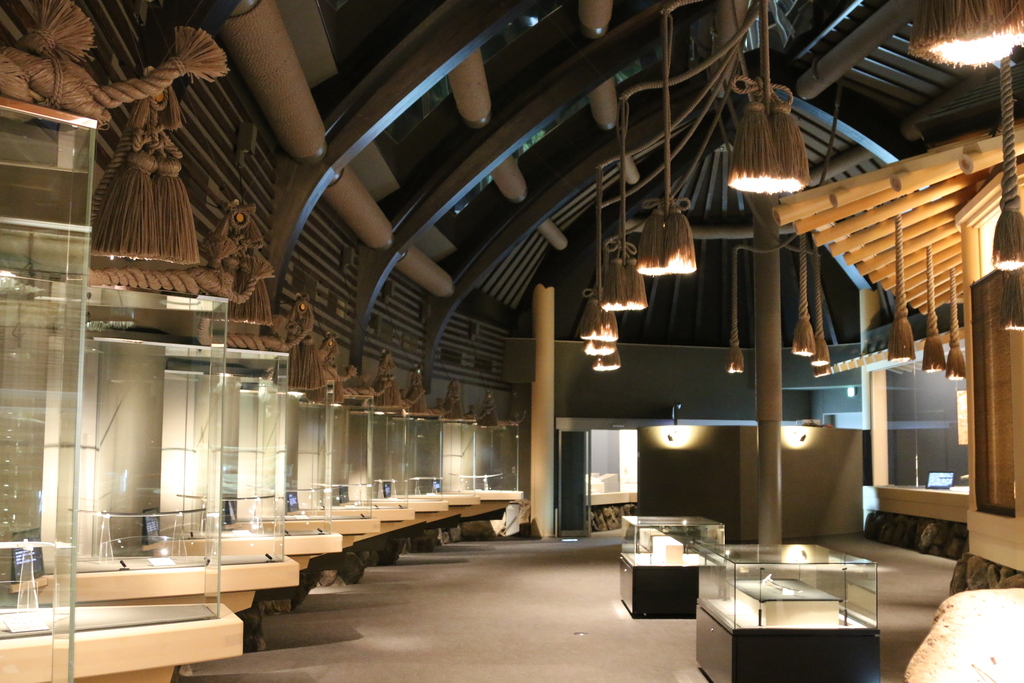
Food
[Gourmet information] Nagoya gourmet you can enjoy in the precincts!
In the precincts of the green-overflowing Atsuta Jingu, a shop where you can enjoy the Nagoya specialty Miya Kishimen is Miya Kishimen Jingu-ten. It is strong and has a smooth texture, and continues to attract a large number of customers. The origin of the name comes from the character of "Miya" in Atsuta Jingu. Oshimashi Kishimen of Shiradashi is also popular. Why don't you enjoy lunch after visiting Atsuta Jingu or Nagoya classic gourmet to fill your stomach?
(1st photo) "Miya Kishimen" 850 yen
(2nd photo) Shop with a refreshing atmosphere. Sweetness menu and souvenirs are also on sale
Miya Kishimen Jingu-ten
Phone Number: 052-682-6340
Time: 9 to 16:30 LO
Closed: No Closed
(1st photo) "Miya Kishimen" 850 yen
(2nd photo) Shop with a refreshing atmosphere. Sweetness menu and souvenirs are also on sale
Miya Kishimen Jingu-ten
Phone Number: 052-682-6340
Time: 9 to 16:30 LO
Closed: No Closed

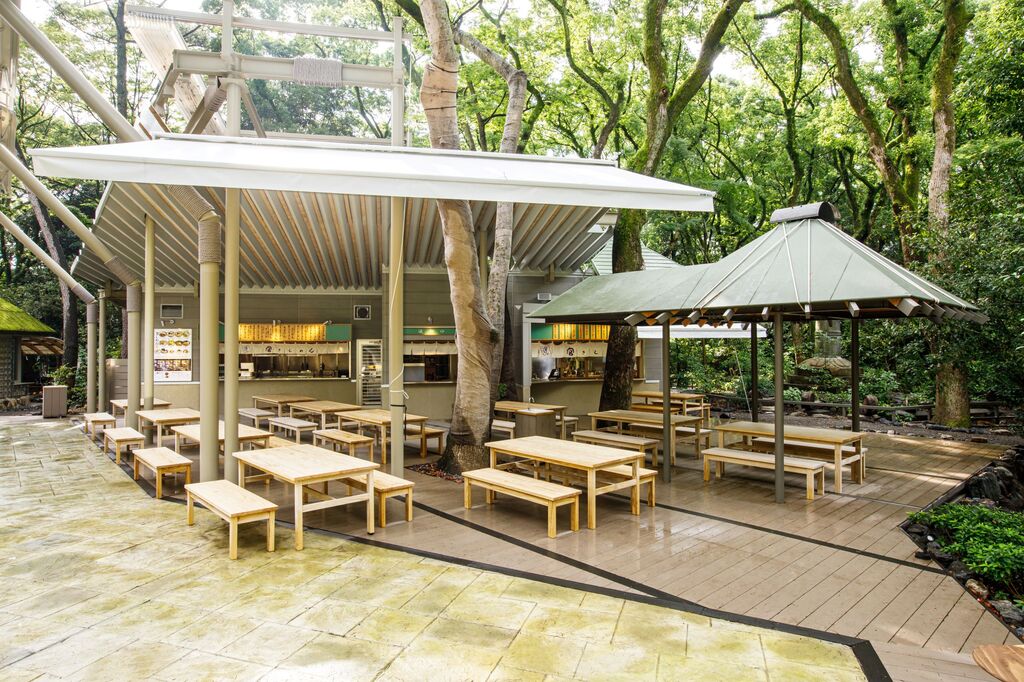
Note
-This article is created based on the contents of "Rurubu information version" or "Rurubu & more." "Rurubu +".
· The data listed is as of March 2025. Prices, business hours, regular holidays, menus, etc. may change or may not be available due to temporary holidays. Please check in advance when using it, as the content may change.
· Closed stores and facilities, as a rule, the year-end holiday, Obon holiday, Golden Week, and temporary holidays are omitted.
· The published fees is the fee including the consumption tax that was confirmed at the time of the interview in principle, and the entrance fee is the adult fee if there is no special note.
-The time of use of the listing is, in principle, open (hall) to closed (hall). Please note that the last order or entrance (hall) time is usually 30 minutes to 1 hour before the closing (hall) time. The last order is written as LO.
・ The spring quality, efficacy, etc. of the hot springs in the list are prepared based on the answers from each facility.
· The data listed is as of March 2025. Prices, business hours, regular holidays, menus, etc. may change or may not be available due to temporary holidays. Please check in advance when using it, as the content may change.
· Closed stores and facilities, as a rule, the year-end holiday, Obon holiday, Golden Week, and temporary holidays are omitted.
· The published fees is the fee including the consumption tax that was confirmed at the time of the interview in principle, and the entrance fee is the adult fee if there is no special note.
-The time of use of the listing is, in principle, open (hall) to closed (hall). Please note that the last order or entrance (hall) time is usually 30 minutes to 1 hour before the closing (hall) time. The last order is written as LO.
・ The spring quality, efficacy, etc. of the hot springs in the list are prepared based on the answers from each facility.

